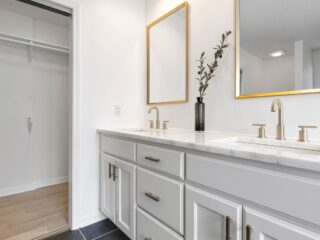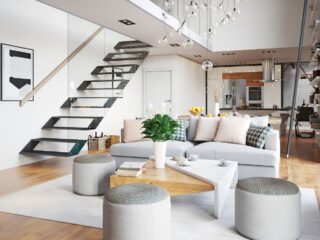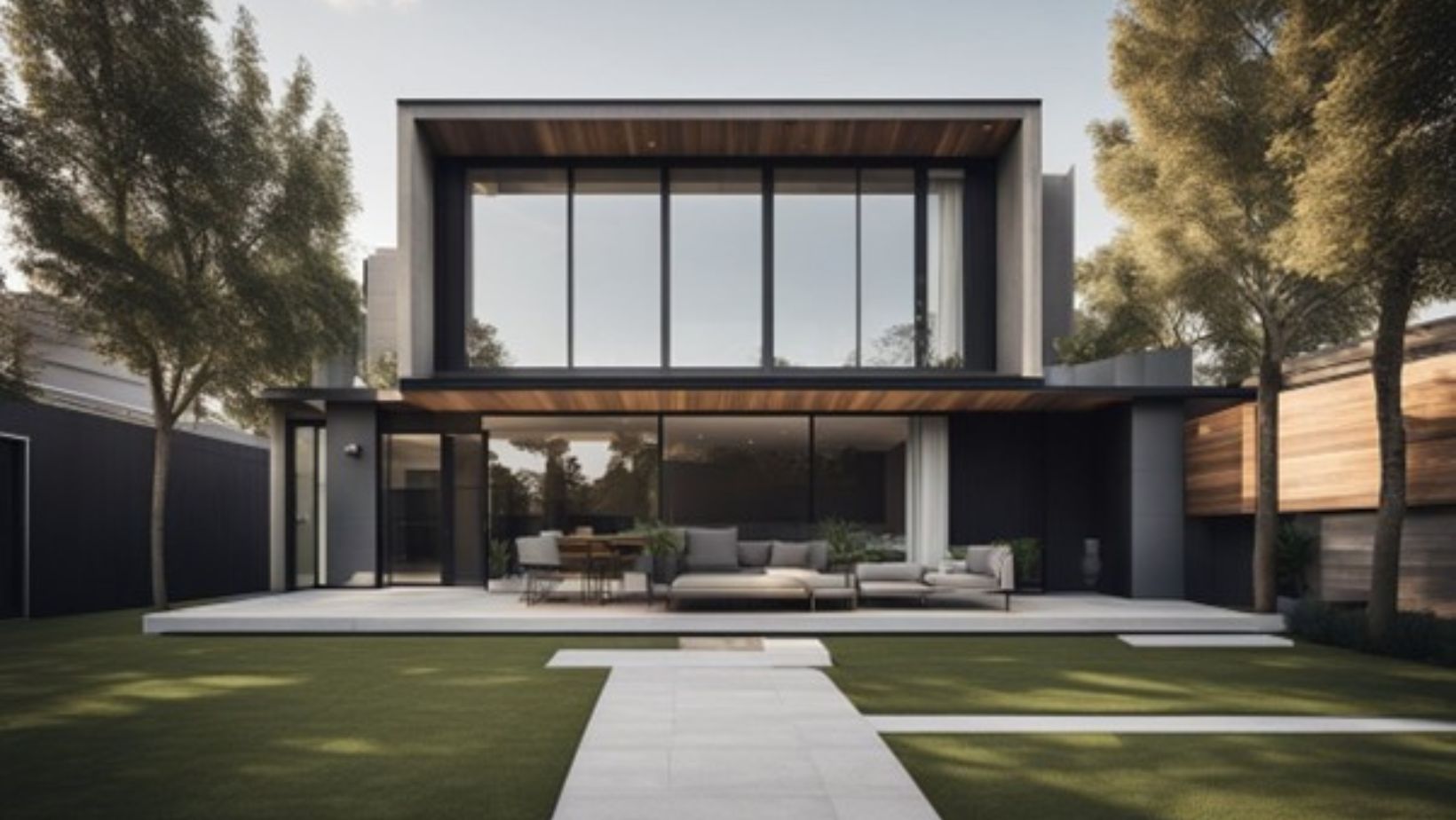
Designing a modern house facade requires a blend of aesthetic appeal and functional design. To create an inviting and contemporary look, one should focus on clean lines, minimal ornamentation, and the integration of natural materials. The choice of colors, textures, and architectural elements plays a crucial role in establishing the character of the home.
Understanding the trends in modern architecture can help homeowners articulate their vision more clearly. Utilizing large windows, open spaces, and geometric shapes can enhance both the appearance and the livability of the facade. These elements not only elevate the visual appeal but also bring in ample natural light, creating a warm atmosphere.
Design Principles for Modern House Facades
Creating a modern house facade requires careful consideration of design principles that enhance both aesthetics and functionality. Attention to material selection, the incorporation of natural light, and a balanced visual appeal play crucial roles in achieving a cohesive and inviting exterior.
Balancing Aesthetics and Functionality
Effective facade design strikes a balance between visual appeal and practical use. A modern facade should be visually striking while meeting structural and environmental requirements.
Clean lines and geometric shapes contribute to a contemporary look. Unique features, such as overhangs or asymmetrical layouts, can enhance visual interest.
Functionality is equally important. Considerations for climate, maintenance, and energy efficiency should influence design choices. Elements like shading devices or proper insulation can enhance both aesthetics and performance.
Choosing the Right Materials
Selecting suitable materials is vital for a modern house facade. Materials should not only complement the design but also offer durability and sustainability.
Common choices include wood, metal, and glass. Each material has unique properties that can affect the appearance and functionality of the facade. For example, metal cladding provides a sleek, industrial look, while wood offers warmth and texture.
Sustainable materials, such as recycled or locally sourced products, are becoming increasingly popular. These choices support environmentally friendly practices while enhancing aesthetic value.
Incorporating Natural Light
Natural light significantly influences the overall ambiance of a home. Strategically placed windows and openings can create a bright and inviting atmosphere.
Large windows and glass walls are popular in modern designs. They can visually connect indoor spaces with the outdoors.
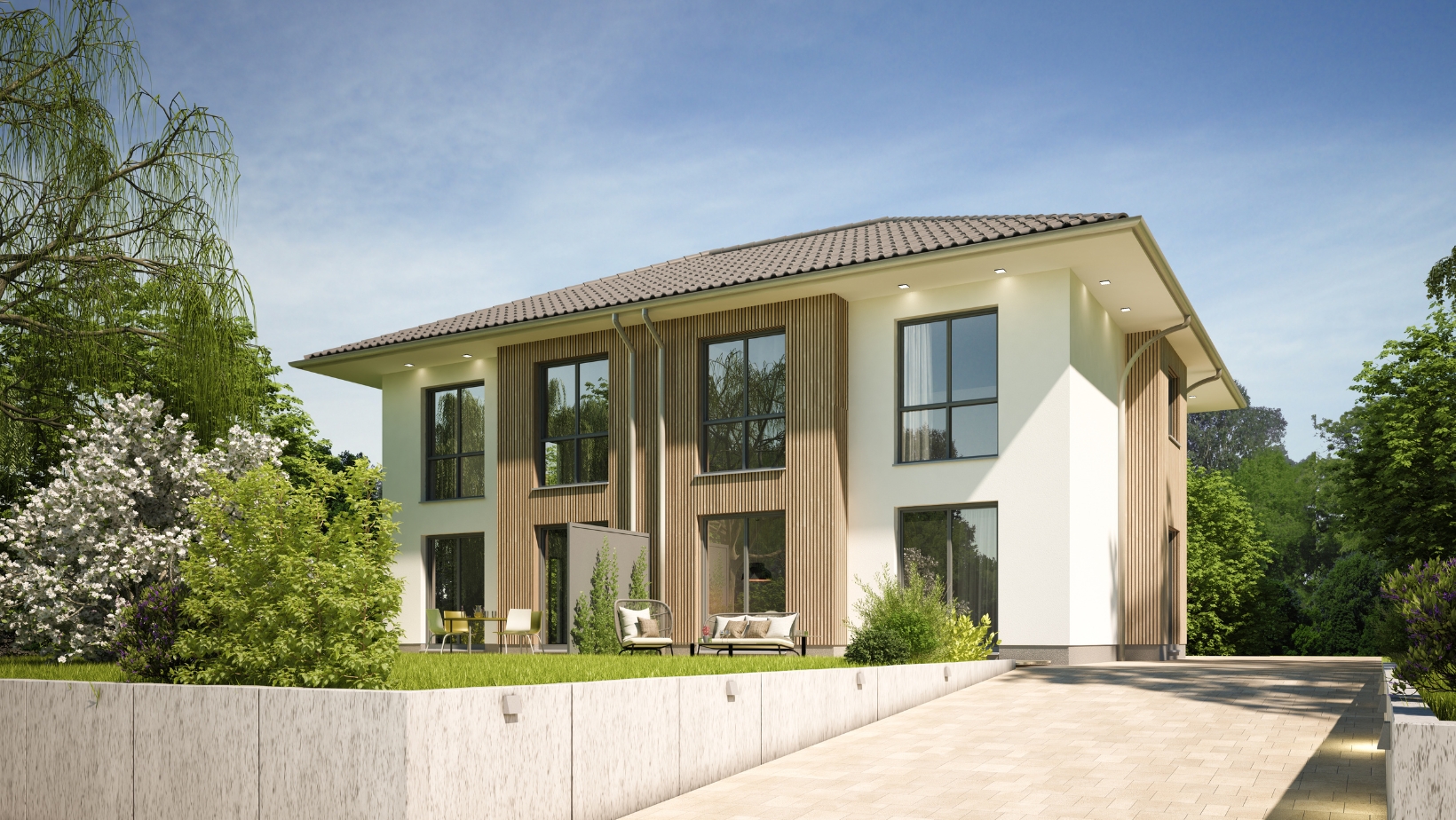
Consider the orientation of the home to maximize sunlight throughout the day. Utilizing overhangs or awnings can help control light and reduce glare. This approach provides comfort while maintaining an open feel.
Sustainability in Facade Design
Sustainable facade design focuses on energy efficiency and the selection of eco-friendly materials. These elements not only benefit the environment but also enhance the longevity and performance of the home.
Energy Efficiency and Insulation
A well-designed facade significantly improves energy efficiency. Proper insulation reduces heat loss in winter and keeps interiors cool in summer. High-performance windows, such as double or triple glazing, minimize energy needs while providing natural light.
Using materials with good thermal mass helps regulate temperature fluctuations. This can lower reliance on heating and cooling systems.
For homeowners in Southern California, considering Irvine solar panel installation can be a practical and sustainable addition to a modern home facade. Solar panels not only reduce long-term energy costs but also contribute to a sleek and forward-thinking exterior design that aligns with contemporary architectural values.
Incorporating features like overhangs or awnings can provide shade, reducing cooling costs. Additionally, reflective materials can be utilized to deflect solar heat, further improving energy conservation.
Selecting systems that accommodate energy-efficient technologies, like solar panels, can also contribute to reduced energy consumption.
Eco-Friendly Material Selection
Choosing sustainable materials is essential in modern facade design. Materials should be renewable, recyclable, or sourced locally to minimize environmental impact.
Options like reclaimed wood not only look appealing but also reduce waste. Products from companies like Got Rot can help with dry rot repair, ensuring structural integrity while using sustainable practices.
Fiber cement and natural stone offer durability and low maintenance, making them ideal choices. Solar-reflective paints enhance energy efficiency, and vegetative walls improve insulation and air quality.
Technical Considerations
Designing a modern house facade requires careful attention to several technical aspects. Structural integrity, weatherproofing, and maintenance greatly influence both aesthetics and functionality.
Structural Integrity
The facade’s design must ensure that it can withstand various environmental stressors. This includes assessing the load-bearing capacity of materials selected for the facade.
Key considerations:
- Materials: Use steel, reinforced concrete, or engineered wood for added strength.
- Connections: Properly design joints and connections to prevent structural failure.
- Load calculations: Conduct structural analyses to determine how forces will affect the facade.
Consulting with structural engineers will help avoid future issues related to stability and safety.
Weatherproofing and Durability
A modern facade must be resistant to weather elements such as rain, wind, and snow. This involves selecting materials and construction methods that prevent water infiltration and damage.
Essential strategies include:
- Vapor barriers: Install vapor barriers to reduce moisture accumulation.
- Sealants: Use high-quality sealants around doors and windows to enhance waterproofing.
- Durable finishes: Select exterior finishes that can resist fading, peeling, and cracking.
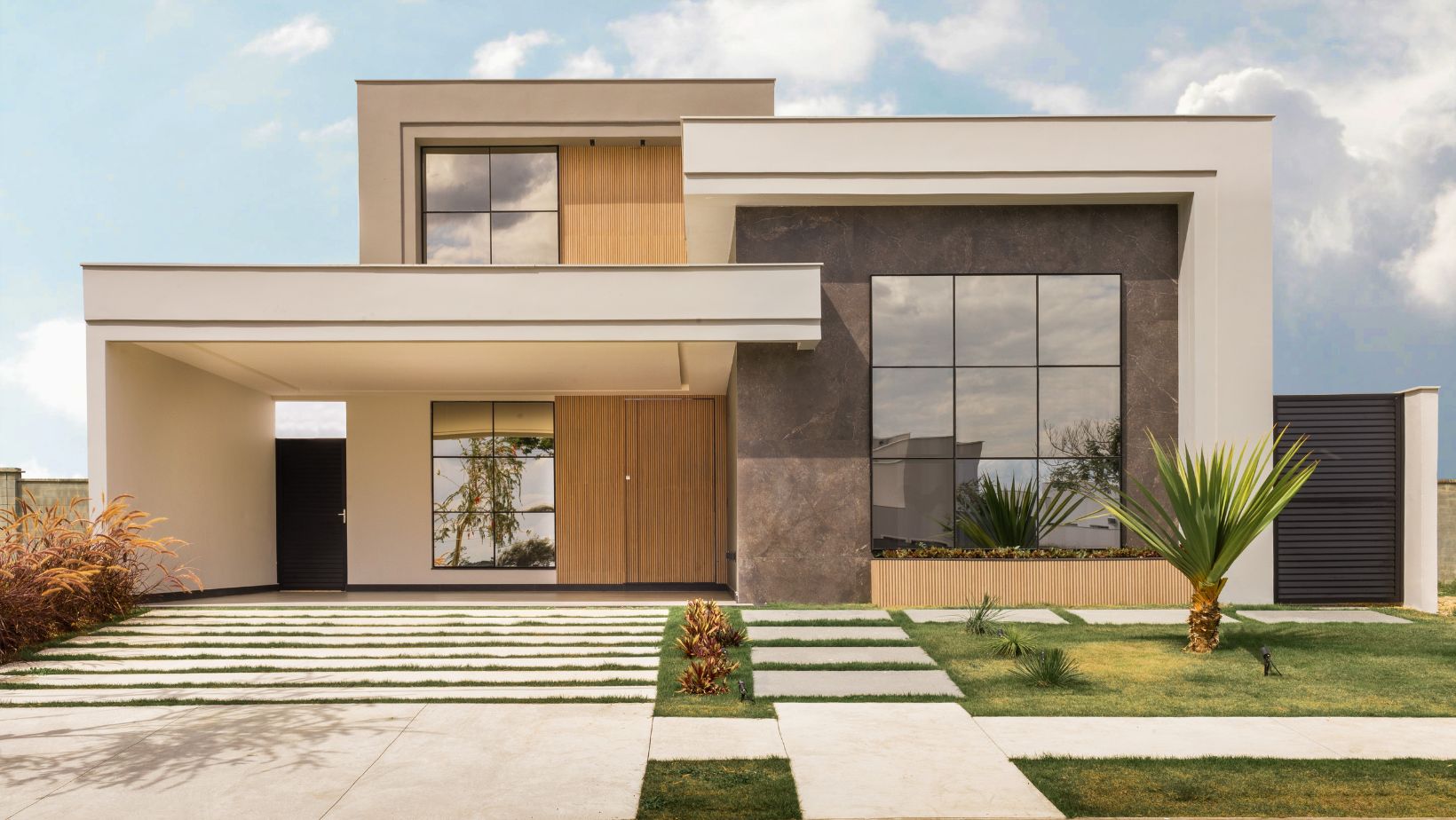
Got Rot – dry rot repair can assist by identifying potential vulnerabilities that may develop over time, ensuring long-term stability.
Personalization and Trends
In modern home design, personalization allows homeowners to reflect their unique tastes. Staying informed about current trends can help in crafting a facade that is both stylish and functional.
Custom Designs for Individuality
Homeowners often seek unique elements to make their houses stand out. Custom designs offer the opportunity to incorporate personal styles, materials, and architectural features.
Key considerations include:
- Material Choices: Opt for materials that best represent personal aesthetics, such as wood, metal, or glass.
- Color Schemes: Choosing a color palette that aligns with individual preferences can enhance the visual appeal.
- Architectural Elements: Custom features like balconies, awnings, or unique window shapes contribute to a distinctive look.
Current Trends in Modern Facades
Today’s facade designs emphasize clean lines and minimalism. Popular trends focus on sustainability and integration with the surrounding environment.
Trends to consider:
- Natural Materials: Stone, wood, and other eco-friendly materials are increasingly preferred.
- Green Facades: Incorporating plants or vertical gardens enhances aesthetics and promotes environmental sustainability.
- Smart Technology: Integrating smart home elements into the facade, such as lighting and security systems, adds both functionality and modern appeal.
These trends help create a home that is contemporary and aligned with current architectural movements.


